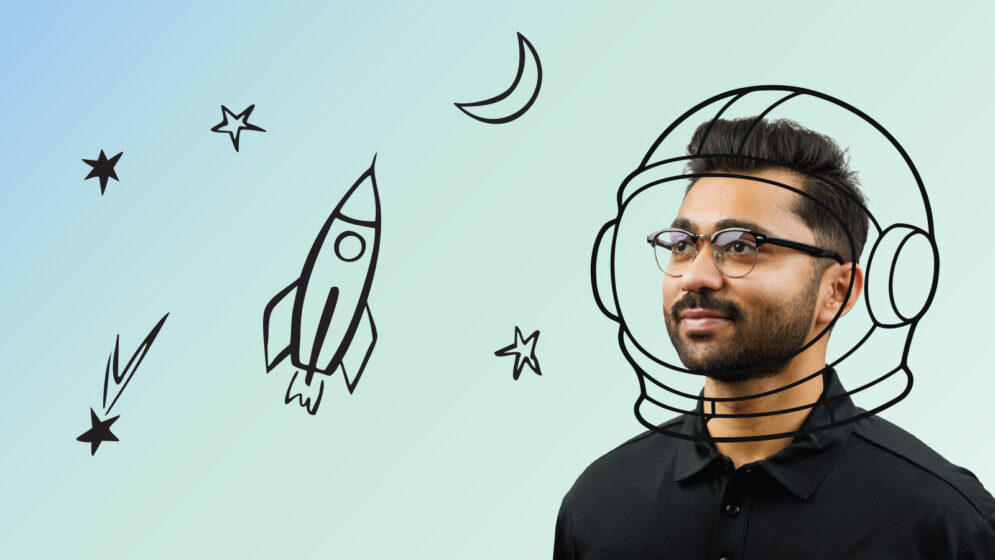Spaces
These Greens Are
Out of this World
Could space farms be a possibility one day? This professor is researching one way to grow greens in zero gravity.
By Gabby Ferreira
Photos and video by Dylan Head
Share this article:
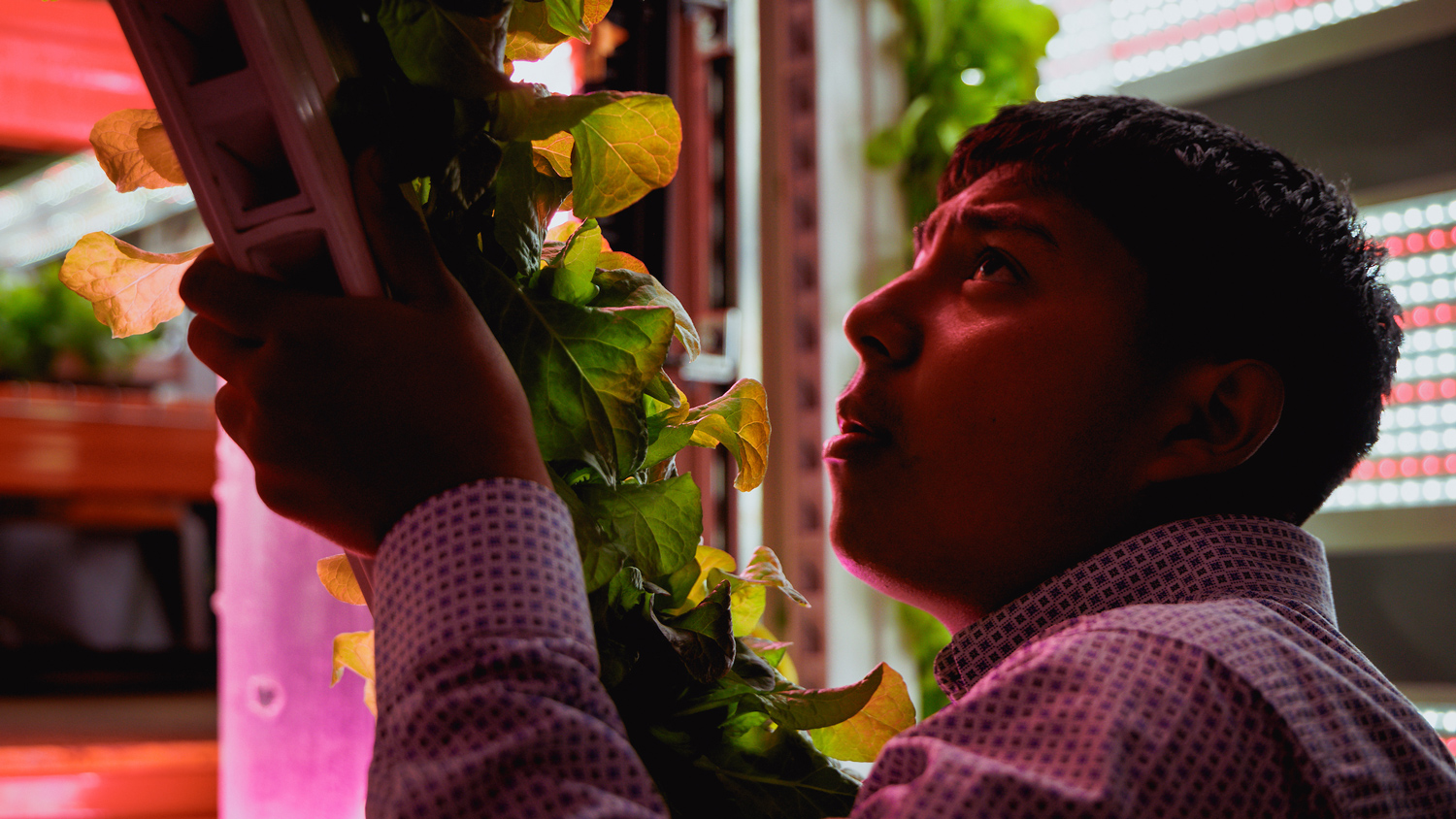
A student repositions a tower of lettuce plants in the BRAE Vertical Farm.
Could humans one day grow food in space? Tucked away in the back of the bioresource and agricultural engineering (BRAE) shop is a tarp-covered lab where students work to help answer that question.
Inside the hydroponic lab, known as the BRAE Vertical Farm, a bounty of leafy greens grows under a spectrum of colored lights, while various irrigation machines provide a background hum.
The lab, run by professor Sara Kuwahara, began after she spent the summer of 2022 at the Kennedy Space Center as part of NASA’s Visiting Scientist/Engineer Program.
Kuwahara spent 12 weeks consulting with NASA on her research specialty, controlled climate agriculture — a blend of engineering, plant science and greenhouse control techniques to grow plants without using traditional soil-based methods.
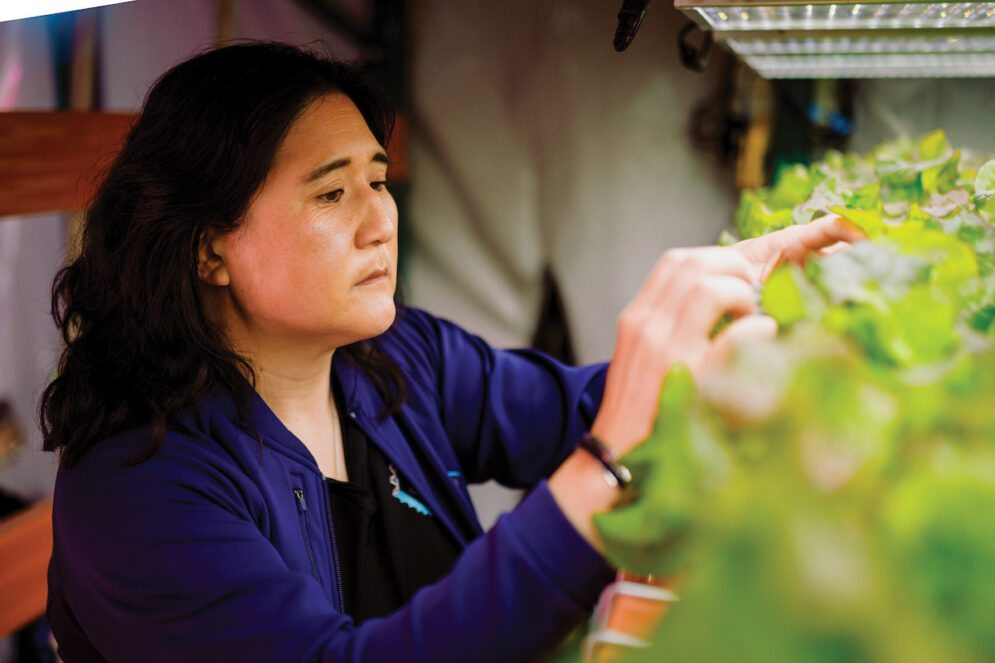
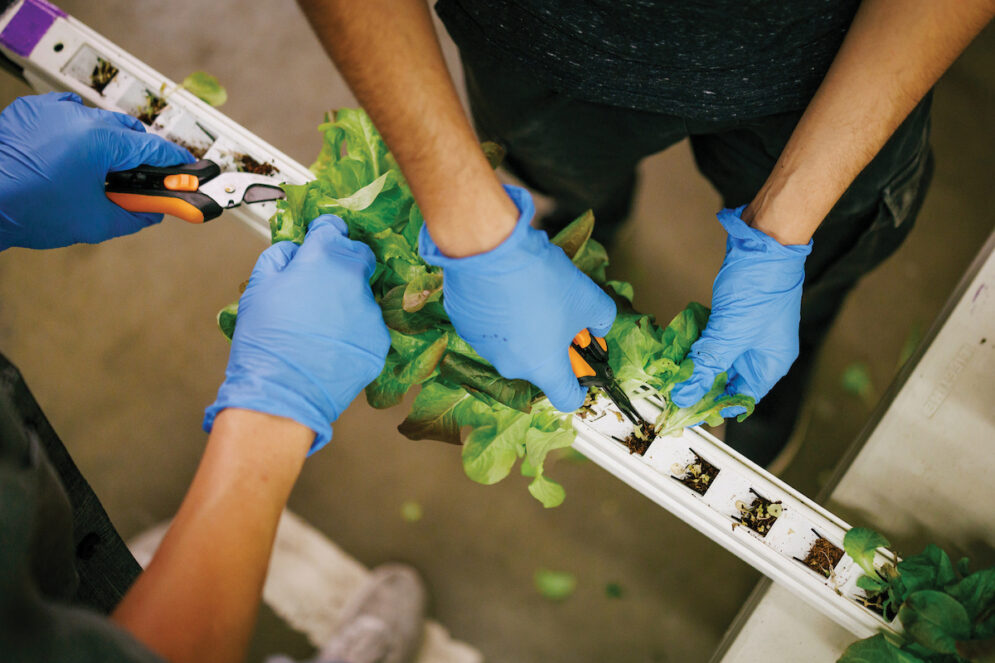
First photo: Bioresource and agricultural engineering professor Sara Kuwahara inspects leaves of Outredgeous romaine lettuce. Second photo: Student researchers harvest lettuce that was grown at the BRAE Vertical Farm.
In hydroponic farming, plants are grown in a water-based nutrient solution instead of soil, and there’s a limit to how much oxygen, a crucial nutrient to plant growth, can be dissolved in the water. But by injecting tiny bubbles of oxygen — known as nanobubbles or ultrafine bubbles — into the water, scientists can bump up the concentration by two or three times the original level.
Kuwahara worked with NASA scientists to study how this technique affects lettuce growth, with the hope that it can one day be applied to more effectively grow crops in space — research she is continuing at the vertical farm.
“It’s kind of a novel area in terms of research. There are a lot of scientists researching it in Asia, but in the U.S. we haven’t really jumped into it yet,” Kuwahara said. “They were really interested in learning more about what I was working on.”
Kuwahara and the NASA researchers used a specific kind of romaine lettuce called Outredgeous, also known as “space lettuce,” because it is currently being grown on the International Space Station, albeit in very small amounts. It’s the same lettuce Kuwahara uses in her lab at Cal Poly today.
Students harvest lettuce grown in the BRAE Vertical Farm.
“It’s this cute little romaine that turns red when it gets really stressed out,” Kuwahara said. “They asked me to use that species so that my data would be comparable with theirs.”
At NASA, Kuwahara also studied the impacts of increasing salt levels along with adding extra oxygen, and whether nanobubbles could help the plants better withstand a saltier environment. In space, the most readily-available water source is recycled human urine, which has a high salt content — something most plants can’t tolerate well.
Learning about the impact of salinity also has ramifications here on Earth, where strawberry farmers in Santa Maria are dealing with the impact of increased salinity in the soil from the Pacific Ocean.
After collecting nearly three years of data, Kuwahara says the effectiveness of the nanobubbles on certain plants is pretty much proven — though more work remains to be done to learn about salt tolerance.
“At least with the lettuce, the nanobubbles are definitely working,” Kuwahara said “The lettuce increases in size by about 50% when we add the bubbles, but the root zone stays the same. We’re basically getting more food, and more bang for your buck.”
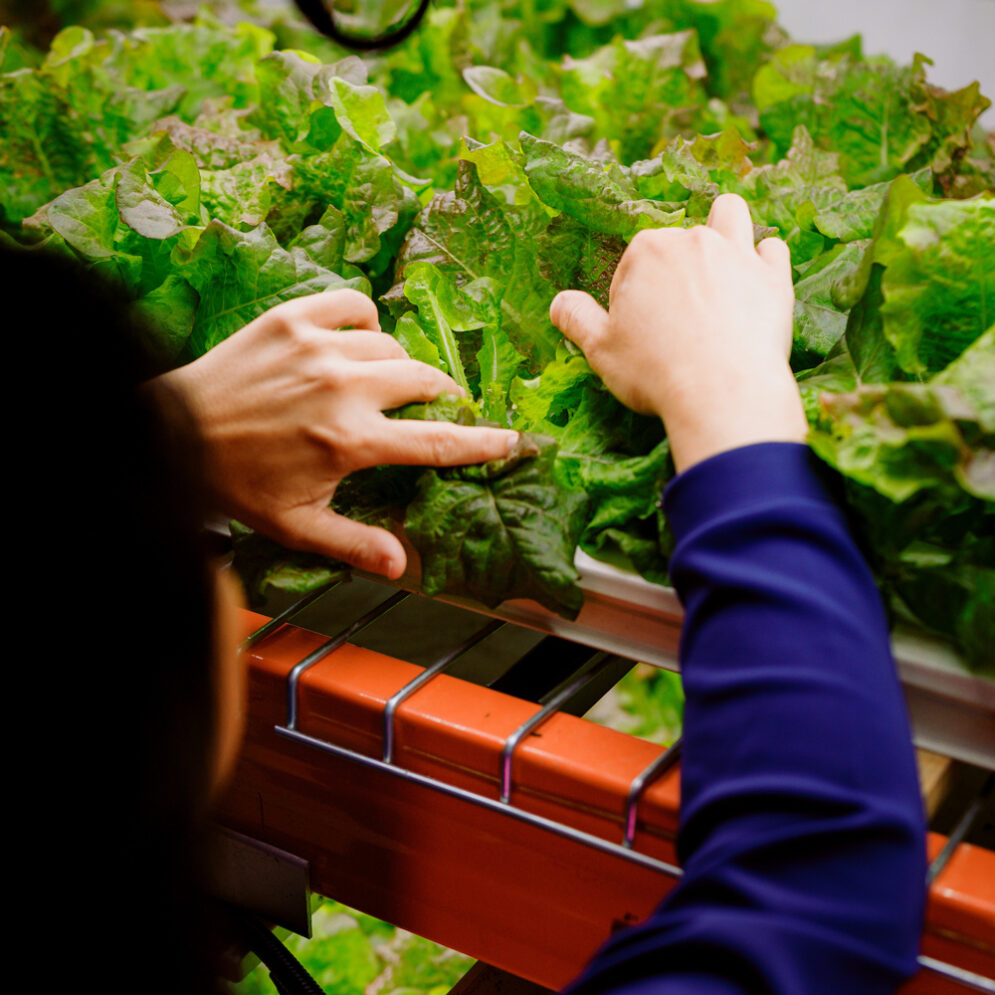
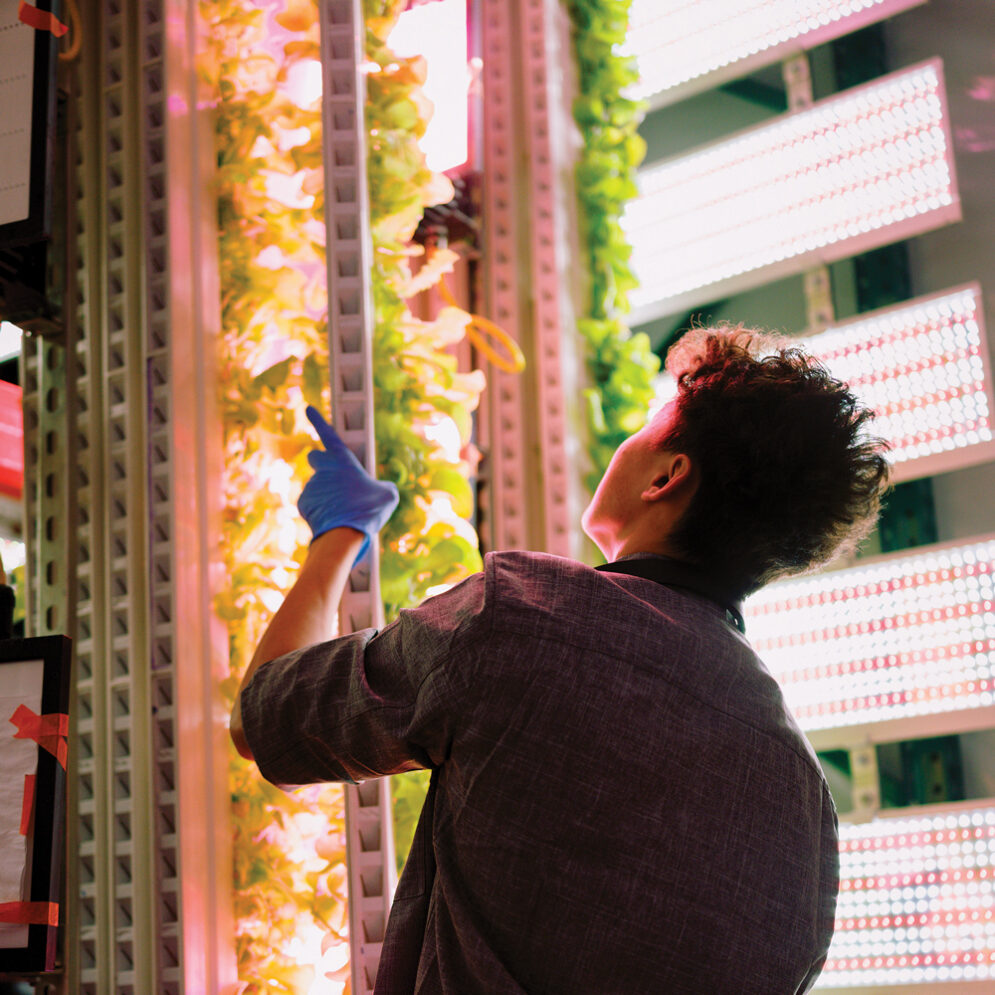
First photo: Kuwahara inspects lettuce plants in the lab. Second photo: A student researcher grabs a vertical planter of lettuce during harvesting at the BRAE Vertical Farm in July.
Anna Wescott, a recent bioresource and agricultural engineering graduate, worked with Kuwahara in the lab for two years, first helping to build the vertical farm and eventually running it during the summer of 2024.
“I really loved the project and the research behind it; it’s definitely a very important area of agriculture that needs more funding and research,” Wescott said. “In California, we have such abundant land for farming that it’s easy to get fresh produce. I hope that’s eventually an option for everyone, and hydroponics makes that possible.”
Wescott, who now works in irrigation engineering, said that having the opportunity to build the vertical farm from the ground up was invaluable.
“It was one of those projects that I could never let go because it was research that I cared so much about,” Wescott said. “Just having that opportunity to Learn by Doing after my second year and then pass that knowledge down to other students and contribute to their Learn by Doing experience was very special.”
For now, Kuwahara keeps in touch with folks at NASA to keep them updated on the lab’s work. “Being able to use their equipment — and just spending time with and learning a lot from these scientists who know stuff that I don’t — really laid the groundwork for the research we’re doing now,” Kuwahara said.
Though full-scale agriculture in space is still quite a long way off, Wescott said she’s delighted that something she took part in could contribute to this in the future.
“It’s exciting to think about people in the International Space Station being able to grow more fresh produce because of research we helped contribute.”
Your Next Read
Travel the cosmos with an interstellar playlist curated by KCPR’s student music director.
Aerospace engineering student Kanan Thummar is at his best in a worst-case scenario — which is why he wants to be an astronaut.



